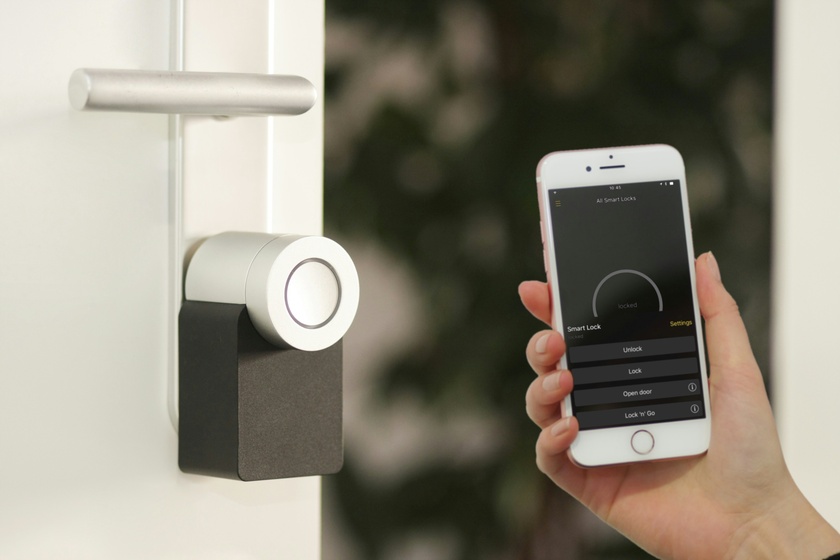For decades, amenities like pools, gyms, and clubhouses defined what it meant to live in a luxury apartment. Today, renters are trading those perks for features that offer something else entirely: peace of mind, convenience, and control.
A 2025 national renter survey conducted by Rently found that 58% of respondents would trade traditional amenities for smart home features. That number jumps even higher among younger renters, with 61% of Gen Z respondents preferring a smart apartment over one with a pool or gym. This data points to a quiet but significant redefinition of what luxury means in multifamily living.
From Recreation to Real-World Utility
Traditional perks like fitness centers or community lounges are still appreciated, but they’re no longer the deciding factor for many renters. What’s gaining ground? Tools that offer tangible, everyday value—especially those that support safety, efficiency, and autonomy.
Smart locks, video doorbells, thermostats, and keyless entry systems were among the top five most desirable apartment features, according to those surveyed. These aren’t just gadgets; they’re lifestyle tools that help residents feel secure, save time, and simplify how they manage their space.
Smart thermostats, for example, give renters more control over their comfort while helping reduce energy bills. Keyless entry means no more lost keys or complicated lockouts. Video doorbells allow residents to monitor who’s coming and going, a priority in an era where delivery services, pet sitters, and visitors are part of daily life.
Technology That Reflects How We Live Now
Modern renters expect to be able to manage their homes in the same way they manage other parts of their lives: through connected tech. Just as they order groceries or book appointments via apps, they want to unlock doors, adjust lighting, or check on package deliveries with the same ease.
This expectation is reflected in the survey data: more than half of renters said they had already chosen—or would be more likely to choose—an apartment based on its smart technology features. While younger renters are leading the trend, interest spans generations, suggesting this shift toward smart living is more than a temporary preference—it’s becoming the new standard.
Touring and Leasing Are Changing Too
The rise in smart apartment demand is not just about fulfilling renter preferences—it also presents a financial and logistical opportunity for property owners and managers. Operators can reduce costs by implementing features like keyless entry systems that remove the need for managing physical keys or scheduling in-person tours. These tools free up staff time and can reduce overhead without diminishing the quality of the renter experience. Meanwhile, prospective renters gain flexibility and privacy when touring facilities.
Operational Wins Behind the Scenes
Technology can make building operations more efficient, from reducing energy consumption to simplifying vendor access to units. Smart thermostats, for example, allow operators to better control vacant unit temperatures and cut utility waste, particularly valuable in extreme-weather markets where weather fluctuations make utility expenses unpredictable. When maintenance staff can access units without coordinating key exchanges, it shortens repair windows and reduces downtime.
These operational efficiencies are meaningful in an industry where every saved hour and every reduced expense matters. And because renters see these tools as worth paying for, there’s an opportunity to recover upfront costs through modest rent increases. In fact, 60% of surveyed renters said they would be willing to pay more for apartments that included smart features.
Access and Automation Are the New Luxury
The common thread across these trends is that technology is displacing traditional amenities as the new marker of apartment quality. Today’s renters are less interested in spaces that are only occasionally used and more focused on features that offer continuous value.
Smart technology delivers on that expectation. It’s used every day, often multiple times a day, in ways that make residents feel safer, more in control, and more connected to their space. It also aligns with how people live now—digitally, flexibly, and on their own schedule.
As smart tech becomes more commonplace, it’s not just a differentiator—it’s becoming the baseline. Properties that don’t adapt risk falling behind, especially as tech-savvy renters make leasing decisions with long-term livability in mind.
Meeting the Moment
Apartment operators who embrace this shift have a chance to meet both sides of the demand curve: offering renters features they want while improving their own operational performance. These upgrades don’t have to be complex or overwhelming. Even small investments in access control or temperature management can pay dividends in retention, staff efficiency, and resident satisfaction.
The bottom line: renters are signaling, clearly and consistently, that their priorities are changing. Control, security, and simplicity are taking precedence over leisure. The pool might still be nice to have, but if it comes down to that or a smart lock, increasingly, the lock is winning.


















